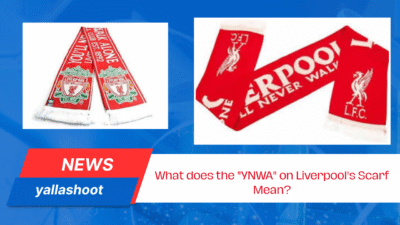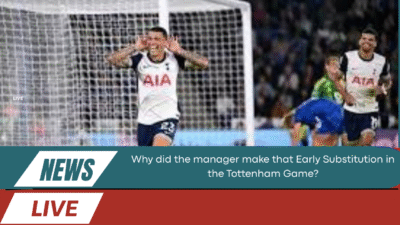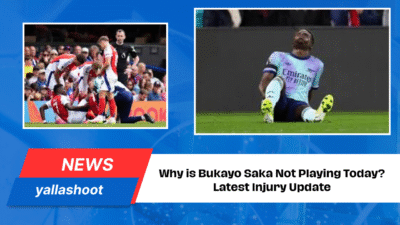The Xavi vs Ancelotti Tactical Battle has become one of the most intriguing storylines in modern football, especially when it unfolds during El Clásico. The clash isn’t just about players on the pitch—it’s a duel of philosophies, where Xavi’s commitment to possession meets Ancelotti’s pragmatic balance of defense and transition.
From the opening whistle, Barcelona tried to dictate the rhythm through positional play, quick ball circulation, and constant midfield rotations. Yet Real Madrid approached with discipline, sitting compact in a 4-4-2 shape and striking with sudden counterattacks whenever Barcelona left space behind. This first half became a tactical chessboard, with both managers making calculated moves to outwit each other.
What makes this battle so fascinating is that it goes beyond statistics. Was Barcelona’s possession dominance truly effective? Could Madrid’s defensive resilience and countering precision tilt the balance? These questions are exactly why El Clásico remains more than just a match—it’s a showcase of football’s deepest tactical contrasts.

Barcelona’s Blueprint Under Xavi
Xavi’s approach was predictable yet demanding: keep the ball, stretch the opponent, and suffocate Madrid’s rhythm.
Formation: A flexible 4-3-3 transforming into a 3-2-5 during build-up.
Build-up Play: Full-backs tucked in; De Jong dropped deep to link defense and midfield.
Midfield Roles: Pedri dictated tempo, while Gavi provided intensity and pressing after losses.
Strengths: Territorial dominance, rhythm control.
Weaknesses: Lack of penetration in the final third.
This mirrored the principles of positional play concepts, central to Barcelona’s tactical DNA.
Real Madrid’s Counter Strategy Under Ancelotti
Carlo Ancelotti emphasized pragmatism, knowing his side couldn’t out-pass Barcelona but could outsmart them.
Defensive Block: A compact 4-4-2, narrow and disciplined.
Pressing Triggers: Aggressive only when Barcelona’s full-backs advanced too high.
Transitions: Benzema dropped to link play, Vinícius stretched the defense, Rodrygo balanced the opposite wing.
Result: Fewer chances, but higher-quality opportunities.
Madrid showed that possession isn’t everything—efficiency matters more.
Key Player Battles
The tactical fight came alive through individual duels:
Pedri vs Kroos – Young creativity against experienced control.
Gavi vs Valverde – Relentless pressing against dynamic carries.
Vinícius vs Araújo – A battle of pace and strength, defining Madrid’s outlet.
Raphinha vs Mendy – Attempts to cut inside vs disciplined defending.
Each of these matchups influenced the overall rhythm of the half.
Numbers Behind the First Half
The stats told the story of possession vs efficiency:
Possession: Barcelona 65% – Madrid 35%
Passing Accuracy: Barcelona 88% – Madrid 82%
Shots: Barcelona 6 (xG 0.4) – Madrid 3 (xG 0.6)
Pressing Efficiency: Barcelona pressed high but left gaps; Madrid pressed selectively and won the ball in dangerous zones.
For fans looking to understand more about interpreting football metrics, check out 7 Key Football Stats Explained for Every Fan.
Halftime Adjustments
At halftime, both managers faced crucial choices:
Barcelona’s Options:
Introduce Ansu Fati or Ferran Torres for direct width.
Increase vertical passing to break Madrid’s compact block.
Real Madrid’s Options:
Add energy through Camavinga or Tchouaméni.
Continue prioritizing transitions over possession.
The second half promised further tactical chess moves.
Lessons from the Xavi vs Ancelotti Tactical Battle
This first half highlighted two modern football truths:
Xavi’s Idealism: Control through possession and structure.
Ancelotti’s Pragmatism: Efficiency through transitions and discipline.
It also revealed that dominating the ball doesn’t guarantee dominance on the scoreboard.
For broader La Liga context, don’t miss Top 5 La Liga Fixtures You Can’t Miss in 2025.
Additional Context
El Clásico remains the most watched club game globally. Learn more about its cultural and historical impact through this overview of El Clásico.
And for fans who follow multiple leagues, upcoming Arsenal Fixtures 2025 show how fixture congestion influences tactical rotations.

FAQs
Q1: What makes the Xavi vs Ancelotti Tactical Battle so important?
It represents two contrasting football philosophies—possession vs counter-attacking efficiency.
Q2: Did Barcelona dominate the first half?
Yes in possession, but no in chance creation. Madrid created more dangerous opportunities.
Q3: Which individual battle was most influential?
Vinícius vs Araújo defined much of Madrid’s threat.
Q4: What tactical changes were expected in the second half?
Barcelona needed direct width, while Madrid required midfield reinforcement.
Q5: Does possession still matter in modern football?
Yes, but only if paired with penetration and efficiency.
Conclusion
The Xavi vs Ancelotti Tactical Battle in the first half of El Clásico demonstrated that football is more than ball possession—it’s about moments, efficiency, and execution. Barcelona dictated tempo, but Real Madrid showed pragmatism can match idealism. This is why El Clásico continues to be the ultimate showcase of tactical brilliance.










